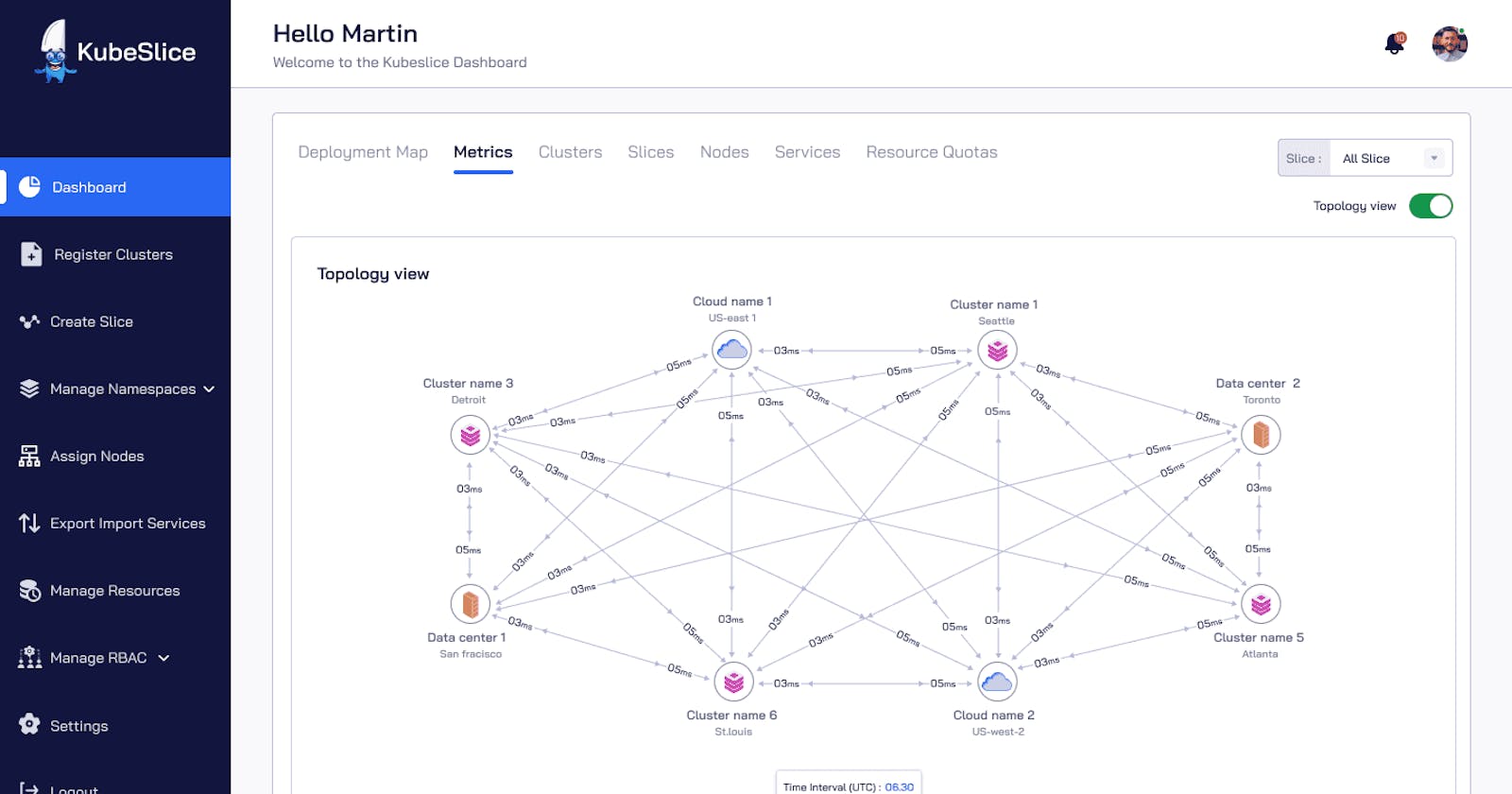Multicluster Management with KubeSlice
4 min read

In the ever-evolving landscape of cloud computing and container orchestration, organizations are increasingly adopting multi-cluster environments to distribute their workloads across various cloud providers, regions, and edge locations. While this approach offers flexibility and scalability, it also introduces complex challenges in managing these distributed clusters efficiently. Multicluster management has become a critical aspect of modern DevOps practices, and tools like KubeSlice are emerging as solutions to address these challenges.
What is Multicluster Management?
Multicluster management refers to the practice of overseeing and coordinating multiple Kubernetes clusters simultaneously. These clusters may be spread across various cloud providers, different regions, or even edge locations. The goal is to create a unified management layer that simplifies operations, enhances security, and improves the overall efficiency of managing distributed workloads.
Challenges Faced in Multicluster Management
Managing multiple Kubernetes clusters can be a daunting task, and organizations often encounter several challenges, including:
1. Complex Networking:
Each cluster may have its own network configuration, making it challenging to establish seamless communication between workloads deployed across clusters.
2. Security Concerns:
Security is a top priority, and maintaining consistent security policies across clusters can be difficult. Ensuring zero trust networking and protecting against potential threats is crucial.
3. Monitoring and Visibility:
Monitoring workloads and their interactions across multiple clusters can be complex. Gaining real-time insights into resource usage, access controls, and service-to-service communications becomes essential.
4. Scalability and Deployment:
As organizations expand, deploying new clusters and connecting them efficiently becomes a time-consuming and resource-intensive process.
Benefits of Multicluster Management
Despite these challenges, multicluster management offers several significant benefits:
1. Enhanced Reliability:
Distributing workloads across multiple clusters reduces the risk of downtime due to regional outages or cloud provider failures.
2. Improved Scalability:
Multicluster setups provide the flexibility to scale workloads independently in different clusters, optimizing resource utilization.
3. Disaster Recovery:
In the event of a cluster failure, applications can be quickly and seamlessly migrated to another cluster, ensuring business continuity.
4. Regulatory Compliance:
Multicluster management enables organizations to adhere to regional data residency and compliance requirements more effectively.
Best Practices in Multicluster Management
To make the most of multicluster environments, organizations should adopt best practices, including:
1. Standardize Networking:
Implement a consistent networking strategy across clusters to enable seamless communication between workloads.
2. Embrace Zero Trust Security:
Adopt zero trust networking principles to ensure that applications are protected from potential malicious attacks originating from other parts of the clusters.
3. Invest in Visibility and Monitoring:
Use robust monitoring and logging solutions to gain real-time insights into resource usage, access controls, and service-to-service communications across clusters.
4. Automate Deployment:
Leverage automation tools to streamline the deployment of new clusters and workloads, reducing deployment time and complexity.
Introducing KubeSlice as a Multicluster Management Solution

KubeSlice is an innovative solution designed to simplify multicluster management and overcome the challenges associated with it. KubeSlice creates a flat, secure virtual network overlay for streamlined data distribution and communication between distributed workloads. Its key features include:
Multi Cloud, Multi Region, Multi Tenant, and Edge Deployments: Connect and manage clusters across various cloud providers, regions, and edge locations effortlessly.
Zero Trust Security: Ensure a secure networking environment across clusters with secure VPN tunnels compliant with NIST and FIPS 140-2 standards.
Visibility and Monitoring: Gain real-time insights into your multicluster setup, including namespaces, resource usage, access controls, and service-to-service communications.
Isolate with Network Policy: Isolate traffic between different teams' applications using network policies to prevent IP address conflicts and enhance security.
KubeSlice simplifies Kubernetes networking, enhances visibility and security, and accelerates communication at the application layer. With KubeSlice, organizations can achieve:
Faster time to market.
Simplified Kubernetes automation.
Improved network management with zero trust principles.
A flat network that eliminates IP address conflicts.
Enhanced security and reduced audit burden.
Optimized infrastructure use, leading to reduced cloud costs.

In conclusion, multicluster management is a crucial aspect of modern cloud-native infrastructure, and the challenges it presents can be effectively addressed with the right tools and best practices. KubeSlice offers a comprehensive solution to simplify the complexities of managing distributed Kubernetes clusters, enabling organizations to harness the full potential of multicluster environments while ensuring security, reliability, and efficiency.